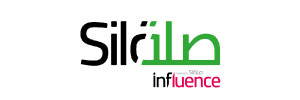Sports in Saudi Arabia Has Evolved from Spectating to Belonging
Sports in KSA is now about belonging, interaction and national pride, says Adeel Ahmed Bokhari, Senior Director, Brand,...
By Yolande D’Mello

Richard Shotton, Founder of Astroten, a behavioral science consultancy and author of The Choice Factory and The Illusion of Choice, will deliver the keynote on how human decision-making remains remarkably constant in an evolving technology landscape in his session titled The Enduring Power of Behavioural Science at VMF.
We spoke to Richard about how bias creeps into market research, how to better understand how consumers make decisions, and get a sneak peek into his upcoming book Hacking The Human Mind: The behavioral science secrets behind 17 of the world’s best brands which will hit the shelves later in September this year.
Excerpts from the interview;
It’s increasingly common to see brands and agencies incorporate consumer psychology as part of their process, although it’s not often systematically applied. There’s still an over-reliance on intuition, or when research happens, it’s based on claimed data. For example, creative routes are tested by asking people which ads they think would make them purchase.
But, as per that famous David Ogilvy quote, ‘The trouble with market research is that people don’t think what they feel, they don’t say what they think and they don’t do what they say.’
It’s not that respondents deliberately mislead researchers, just that nobody is aware of all the elements that influence their decisions. When asked, people don’t — in fact, can’t — tell you what motivates them. So, findings from a lot of market research can never uncover the whole truth.
There’s still more headroom to align research with genuine motivation through the application of behavioural science.
So, to carry out behaviourally-aligned research, a good place to start is with observed data rather than claims. There’s some interesting evidence that illustrates why.
In a 1999 study by Adrian North and colleagues at the University of Leicester, different types of supermarket music were seen to influence wine selection. French music inspired French purchases, and German music, German wine. You can see the results here:
French music | German music | |
French wine | 40 | 12 |
German wine | 8 | 22 |
Bottles sold within each music condition
But when questioned afterwards, only 2% of shoppers acknowledged that the ambient music had inspired them. Even when prompted, 86% still claimed that it had played no part in their decision. It’s not that they were lying — simply that they were unaware.
I think this study highlights why brands should be sceptical about customer claims and instead set up simple test and control experiments, like North’s, to get closer to the truth
One of the reasons why I love behavioural science is that it can help with almost any challenge. It’s the study of decision making, and what could be more relevant to marketing, or indeed any area of communication? Customers are continually making decisions: Should I buy this? Should I click here? Should I sign up? Understanding what actually drives these decisions is key to shaping them.
Second, behavioral science offers a robust approach. It’s based on scientific evidence drawn from experiments, including those conducted by Nobel Laureates, Daniel Kahneman, Richard Thaler and Herbert Simon. Supporting your marketing strategies with experimental evidence can give you more confidence in their likely effectiveness than when you apply intuition or opinion alone.
Third, behavioral science has identified such a range of biases that whatever the challenge, there’s an evidence-based behavioural bias that will help you solve it.
There’s an evolutionary explanation to so many influential behavioural biases — so they tend to remain constant across time and culture. Consider one of the most influential, social proof, which is the observation that we are highly motivated by what other people around us are doing.
It’s one of the most researched areas of human behaviour, and was first demonstrated experimentally back in 1935 by Muzafer Sherif at Columbia University. Participants were shown a light projected in a dark room and asked to say whether it was moving. Respondents were first tested individually. And then they were placed in groups of three, with two who were in agreement and one outlier. When the researchers showed the same light again, the outlier tended to change their response to agree with the other two.
This is one of many such studies. It’s a US-based one, as many are, but the same effect has been found in Canada, Mexico, Guatemala, Peru, South Africa, Saudi Arabia, UK, Netherlands, Russia, Australia, India, Singapore, and China — and probably many more.
It makes evolutionary sense. In an uncertain world, hundreds of thousands of years ago, where the next action could put us in harm’s way — Should we eat this berry? Is that cave safe to enter? — it seems wise to copy what our peers have done and lived to tell the tale. If you’re in a shopping centre and a screaming crowd runs for the exit, you’re going to follow.
This is just one example. Many other biases seem to have logical roots in the survival of the species. Which is why aligning with them is so effective. There are cultural nuances, so that different influences may hold somewhat greater or lesser sway, but they still hold power across a general population.
With this new book — written in partnership with MichaelAaron Flicker — we’re giving you behavioural science lessons from the best.
Of course, all marketers aim to learn from the best. But how do you identify the tactics responsible for a company’s success? A stab in the dark? This is where behavioral science can help — it has a solid evidence base, unlike much of marketing theory. So if you can spot the behavioral biases, you can understand why a tactic works.
Some brands are mystifyingly successful. Why are customers happy to pay a premium for things that should be free, like water; things that should be cheap, like milk; and things that would do the same job at half the price, like vacuum cleaners?
Hacking The Human Mind answers these questions, identifying the behavioral-based approaches that helped take 17 leading brands to the top. So brands can learn from the winners and power-up their marketing.
The book is due to be published in English in September 2025. My earlier books, The Choice Factory and The Illusion of Choice, which give a grounding in key biases and how to use them in your marketing, are coming out in Arabic, hopefully the next one will too.
Sports in KSA is now about belonging, interaction and national pride, says Adeel Ahmed Bokhari, Senior Director, Brand,...
John Speers, Joint Managing Director Middle East at MSQ, believes in tapping into the human essence of a...
They are set to inspire the next generation of marketers. From luxury hospitality and tourism to finance, retail,...


Growth and Analytics Leader who has scaled unicorns, driven IPOs, and ran cross-country P&Ls across MENA, SEA, EU, and India. In the past, he has built, led and shaped Growth teams at GoJek, Airtel and P&G. Known for building high-performance org. cultures grounded in data discipline, experimentation, strategic clarity, and bold but measured risk-taking.

With 18 years of experience in digital transformation, eCommerce, and supply chain innovation, Arjun Sarkar is a key driver of technological advancements in the digital commerce sector. As Vice President of Digital Ecosystem and Partnerships at Dubai CommerCity, he leads the development of a robust digital ecosystem that empowers businesses to scale and succeed in the Middle East’s thriving eCommerce market.
Arjun has a strong background in software engineering and business strategy, having spearheaded the digital transformation of global brands such as Marks & Spencer, Toys R Us, Ace Hardware, and Lancôme. His expertise in omnichannel retail and technology-driven solutions has enabled brands to optimize operations and enhance customer experience.

Mohamad Al Rayes is a product and growth leader with deep experience across digital marketplaces, AI-driven platforms, marketing technology, and large-scale product optimisation. He specialises in transforming user journeys, scaling acquisition funnels, and building data-powered experiences that drive measurable growth.
His expertise spans product strategy, UX/UI leadership, performance marketing, growth hacking, and designing intelligent systems such as AI sales agents, smart search experiences, and dynamic customer platforms. With a strong background in AI, automation, and user-centric design, Mohamad is known for bridging strategy, technology, and experience to create high-performing digital products.

George Yaryura is a global Chief Marketing Officer and Brand & Growth Strategist with over 25 years of leadership across financial services, fintech, PropTech and telecom. He transforms strategy into measurable growth—building brands that lead, marketing engines that deliver revenue, and communications that inspire confidence. George has driven transformation for global organisations, including Mashreq, Visa, Allfunds (Santander), Skype, and Orange, supporting 8–9 figure revenue goals, M&A, and IPOs. A published author and patent holder in tokenisation, he brings entrepreneurial energy, multilingual fluency, and board-level expertise to scaling high-growth businesses across MENA, Europe, the U.S., and Asia.

Álvaro Martínez is a dynamic growth leader with a proven track record driving expansion and pricing innovation in fast-moving consumer digital businesses across LATAM, Europe, the Middle East and Africa. With a strategic mindset grounded in data-driven insights, he has led market-entry and scale-up initiatives that have redefined customer acquisition, monetisation and competitive advantage. At Talabat and InstaShop, Alvaro oversees multi-channel growth strategies, pricing models and partner ecosystems to deliver sustained profitability and regional leadership.

Joy Dabeet is the Chief Marketing Officer at amana. Leveraging her 15 years of industry experience, she steers every facet of amana’s marketing strategy and implementation. A key aspect of Joy’s responsibilities is to strengthen amana’s position as the leading neobroker; scaling the brand and driving its growth across the region. As a data-driven marketer, she runs a fully in-house marketing team which includes performance marketing (acquisition, CRM, SEO, data analytics), brand communications, content creation and design. Her team’s data and performance analysis also support other departments from sales and customer service to operations and finance.

For the past years, Ahmed has been helping brands across the Middle East, Africa, and Near East truly connect with their customers. As an Emarsys Advisor, he works side-by-side with marketing and CX teams to turn data into meaningful conversations delivering the right message, on the right channel, at the right time. His passion lies in creating personalised, omnichannel experiences that don’t just drive sales, but build trust and loyalty. Ahmed believes that great customer engagement is less about technology and more about understanding people and using the tools to bring that understanding to life.

Vollin Braganza is an experienced sales and growth leader with a strong track record across top global brands, a results-driven and growth-oriented professional with a passion for driving digital transformation through modern technology. With over 8 years of experience in the B2B SaaS space, he specializes in helping businesses scale across industries—E-commerce, Fintech, Banking, Real Estate, Edtech, and Healthtech.
At MoEngage, Vollin leads strategic growth initiatives across the MENA region, helping B2C brands unlock customer value through insights-led engagement.

Yolande is a journalist with over 15 years of experience reporting on technology across both enterprise and the start-up landscape. Since 2015, she has been hot on the trail of covering artificial intelligence, exploring its evolution from emerging innovation to global disruptor. Her conversations with C-suite data and tech decision-makers globally gives her insights into leading marketing strategies, trends, and policy decisions shaping the future of work, business, and life as we live it.

Haris Naeem is a Senior Account Executive at Braze. Haris has been with Braze for 3.5 years and was the first dedicated hire in the region, managing key client relationships and helping drive customer success and growth. Outside of work, Haris has a passion for history, film photography and playing padel.

Alannah Higgins looks after the leading Brands in the GCC region who use Braze to power their omnichannel customer experience. Alannah helps MarTech & Product leaders evaluate how they can take their CX strategy to the next level, and what technologies are best placed to deliver their business objectives. She is passionate about great customer experience and is located between Dubai & Riyadh, working for Braze’s go to market team.

Victor Busnel is the Trading Director for MENA at the Trade Desk, responsible for helping clients take advantage of the various tools and features the Trade Desk’s platform has to offer, helping brands and agencies get the most out of their programmatic media spend. After spending 3 years at The Trade Desk in the UK, Victor started working on developing the company’s business in MENA , and is now based in Dubai with a full focus on growing programmatic for the region. Prior to Joining The Trade Desk, Victor worked in consulting at The Boston Consulting Group helping clients optimize their marketing strategies, and in marketing roles at L’Oréal and NBCUniversal.

Simon is a globally recognised creative leader and strategic communicator. He is the Chief Communications & Marketing Officer at the King Salman Park Foundation – one of the world’s most ambitious and transformative urban regeneration projects set in the heart of Riyadh, Saudi Arabia. Formerly Global Chief Creative Officer at creative & strategic communications agency, Burson and Global Chief Creative Strategy & Innovation Officer at Hill & Knowlton, Simon led the creative transformation across the US, Middle East, China, and Europe. He blends strategic and design thinking with creative expertise to drive innovation, growth and transformative change, earning multiple Cannes Lions and top creative rankings in PR Week. A sought-after speaker and juror at Cannes Lions and D&AD, Simon is known for building creative cultures that inspire, connect, and transform.

Wasif is a result-driven Global Transaction Banking Leader and Innovator. In a career spanning over 25 years, he has played a key role in building and growing Trade, Supply Chain Financing (SCF) & Transaction Banking business, grounds-up, in multiple local & international banks. He has also been instrumental in banks becoming market leaders in Trade & Transaction Banking solutions based on the strength of their customer-centric products, distinguished user-experience and marketing prowess.
Wasif possesses proven expertise in establishing & managing both Business & Digital Technology. He is the trusted go-to person for leading strategic initiatives, digitalisation, technology transformation programs, FI/Fintech partnerships and sophisticated solution sales.
His alma maters include MIT Sloan School of Management and KFUPM.

Julian Morbidelli is a loyalty and rewards executive with over 15 years’ experience across the Middle East and Africa. He spent a decade with the ENTERTAINER, a leading provider of incentives and loyalty reward solutions, where he held senior leadership roles including General Manager for Saudi Arabia.Today, as Director of Loyalty at Cenomi Centers, he is shaping the launch of Cenomi Plus Loyalty, a new programme designed to engage the 130 million in annual footfall. Julian is recognised for creating ecosystems that engage and connect customers in unique ways while building commercial models that drive rapid and sustainable growth.

Mohamed Hegazy is the Chief Experience Officer (CXO) at almatar Group, leading customer-centric innovations in the travel industry. With expertise in CX, UX, VOC, and loyalty programs, Mohamed has driven significant NPS growth, retention, and self-service adoption.
Passionate about digital transformation, he has implemented Al-driven personalisation, gamification, and proactive engagement strategies.

Hany Mokhtar, known globally as “The CX Master” or “The CX King,” is a world-class authority in Customer Experience and Digital Transformation with over 30 years of cross-industry expertise spanning utilities, telecommunications, banking, government, and technology sectors. As the creator of the internationally recognized 4Es CX defining Framework and the ICE Methodology (Continuous Improvement of Customer Experience), he has transformed how organizations approach customer-centric business strategies. His groundbreaking work has been featured in CXM World Magazine as “one of the world class speakers and thought leadership,” recognized by The Arab Icons as The CX authority.
Mokhtar is also a Harvard Business Review Advisory Council member and published academic researcher, Hany has trained over 2,000 executive level students across multiple age groups, and professions through 5,000+ hours of expert knowledge transfer.
His educational partnerships with prestigious institutions like the American University in Cairo have produced certified CX professionals, startup founders, and transformed senior executives from Fortune 500 companies including Emirates NBD, Mobily, Microsoft, and Qatar Insurance Company abs others ..
From C-Suite boardrooms to university lecture halls, from MENA & EMEA corporate leadership programs to international conferences, Hany combines deep scientific knowledge with empirical know-how implementation expertise, making him the definitive authority for organizations seeking sustainable customer experience transformation and competitive advantage.

A certified marketing professional who launched Saudi as a destination into China and India working for Saudi Tourism Authority after building and positioning the brand for PIF giga-project Jeddah Central Development. Earning over 70 awards internationally for work in Europe, Japan, the Caribbean, Americas and across Asia Pacific, John is the only person to win 3 Effie’s in travel, the benchmark on global marketing effectiveness.
After 3 years of searching for an agency that understands travel he set one up. MSQ Middle East is the only creative agency in the Middle East specialising in travel and sport, backed by MSQ one of the fastest growing agency networks in the world, closing the loop in marketing to convert travellers and bringing in significant visitation and spend into Saudi and the Middle East.

Ameerzeb is a market creation strategist known for turning ambitious national visions into financially sustainable, investable ecosystems. At the Royal Commission for AlUla, he leads the Commercial Development and Investment Promotion function, helping transform one of Saudi Arabia’s most iconic cultural landscapes into a globally relevant tourism economy.
Over the last two decades, Ameer has consistently turned white space into market opportunity. He has built new business lines, reshaped industries, and unlocked growth across some of the region’s most complex sectors. From launching the world’s first Islamic wealth platform at HSBC to structuring innovative investment models in sports and heritage tourism, his work has helped transform both institutions and entire destinations.
His approach sits at the intersection of policy, private capital, and cultural authenticity. He brings together stories and spreadsheets to design businesses and places that endure.

May is a visionary brand builder and transformation leader with over 20 years of experience shaping and scaling some of the region’s most iconic luxury and premium brands across fashion, beauty, and lifestyle. Renowned for her ability to blend strategic growth with cultural storytelling, May has led brand evolutions that connect emotionally, grow commercially, and stand out creatively.
Throughout her career, she has held senior leadership roles across top regional companies, where she spearheaded brand repositioning, omnichannel expansion, and consumer-centric innovation. Her approach merges data-driven strategy with deep storytelling to craft distinctive brand identities that resonate across physical and digital touchpoints. May is widely recognised as a cultural architect, helping Saudi-born brands express their heritage with relevance and beauty on the global stage.

A creative strategist on a mission to connect people, power up teams, and unlock business potential with AI, Bady is the product lead with Ninja, a quick commerce powerhouse in Saudi Arabia. Previously, he has led Product at MRSOOL, Haraj, Dukan and machinestalk. He holds a masters in Artificial Intelligence, and a degree in computer engineering. According to Bady, he believes in turning challenges into opportunities by blending curiosity and a human-centred approach.

Ahad is a senior commercial executive with nearly two decades of proficiency in entertainment, retail, malls, fashion, F&B, hospitality, etc. He is recognised for transforming businesses, driving profitability, and fostering long-term value through strategic partnerships with committed passion for innovation in customer engagement. In his current role, he leads marketing at SALA Entertainment. Previously, he has led teams across Abdullah Al Othaim Investment Co, Majid Al Futtaim, Rubaiyat Modern Luxury Co. LTD and many more.

Ibrahim is the Product Director at Tamara leading the Payment vertical. His role is to create a premier service by focusing on availability, risk, and cost. Prior to that, he led Foodics Pay product, a comprehensive payment solution that integrates software, hardware, and payment processing. With a background in Computer Science and an MBA from KFUPM, he possesses strong analytical, problem-solving, and leadership skills that enable him to contribute to business growth and development. He has a certification in Strategy Execution from Harvard Business School. According to Ibrahim, he has a passion to leverage his FinTech and SaaS expertise to create innovative and impactful products that solve real-world problems.

Adeel is the Senior Director for Brand at the Saudi Olympic & Paralympic Committee, where he oversees the strategic and creative direction of the Team Saudi brand, celebrating the journeys and achievements of our athletes in the Olympic and Paralympic Games. Adeel has over 17 years of experience in brand, marketing, and commercial business leadership. He spent ~12.5 years at Procter & Gamble working in MiddleEast, Switzerland, Africa and Pakistan regions, launching and growing multiple brands such as Gillette, Safeguard, Pantene, H&S and Pampers – building strong background in brand equity, marketing strategy, creative ideation, consumer insights, problem solving and Business P&L Management. He has also led teams at Nahdi Medical Co., the largest pharmacy retail chain in GCC. He has certifications in corporate governance, healthcare management, and generative AI. According to Adeel, he is passionate about learning new things, building the capability of himself and others while making a positive impact in the world.

Bandar Abdulmajeed is the Chief Brand & Marketing Officer at Amsa Hospitality, bringing over 25 years of diverse experience in retail, hospitality, F&B, and entertainment. A proven leader, he has spearheaded over 2000 events, launched and rebranded over 30 brands, and established marketing departments for major companies. Known for his strategic acumen and ability to drive commercial growth and complex marketing operations, Bandar is committed to innovation, delivering impactful brand narratives, and building high-performing teams.

Mohammad is a versatile and results-oriented business and marketing management professional, with proven creative campaign leadership. In his current role as director of marketing and communications at Al Rajhi Takaful, he demonstrates strong knowledge of marketing strategy, brand positioning and relationship management. In the past, he has help prestigious roles with companies like Riyadh Holdings, Al Khozama Investment, Cenomi Centers and flynas. According to Mohammad, the experience and exposure gained with leading companies in its field has taught him the ability to quickly adapt to different marketing environments, while providing thought input and pro-active solutions.

Dr Adham brings over a decade’s experience in healthcare marketing, advertising, and communication, driving measurable business outcomes. Dr. Adham is currently the Group Marketing Director at Hayat National Hospitals under Alinma Group, leading national strategy and digital growth. With 15+ years of experience, he drives data-led acquisition, CRM retention, and brand performance. His work blends AI, analytics, and storytelling into scalable marketing systems. Google-certified and a Chartered Toastmaster, he’s known for precision execution and executive communication. He builds high-impact ecosystems that deliver measurable business results.

Talha brings 22 years of experience in the vibrant and ever-evolving hospitality industry. His journey has encompassed various aspects such as Reservations, Sales, Marketing, Revenue Management, Front Office Management, and Guest Services. For the past 13 years, he has been an integral part of Riyadh hotels, involved primarily with hotel operations and guest experiences.
In his current role as the Director of Sales & Marketing at the prestigious Radisson Blu Hotel, Riyadh Convention & Exhibition Center, he excels at driving commercial success while upholding the highest standards of service excellence.
According to Talha, his ability to swiftly discern market shifts and adapt strategies has been a cornerstone of his success. ‘By aligning business objectives with customer-centric approaches, I strive to create seamless experiences that resonate with guests and elevate the hotel’s reputation.’

Serving nearly 30% of the top 1,000 online retailers, Feedonomics is the leading data management platform powering omnichannel growth for the world’s top brands and retailers. Customers like Dell, PUMA, Fox Racing, and New Balance see dramatic results with Feedonomics, such as a 95% increase in return on ad spend and a 22% increase in annual revenue growth. With its flexible technology and full-service support team, Feedonomics facilitates a variety of data management use cases across industries such as ecommerce, automotive, employment, travel, real estate, and more. Feedonomics has thousands of active customers, integrations with hundreds of ecommerce platforms and channels, and strategic partnerships with industry leaders like Amazon, Meta, Google, Microsoft, and TikTok. To learn more about Feedonomics, a platform-agnostic BigCommerce subsidiary, visit www.feedonomics.com.

OneTrust’s mission is to enable the responsible use of data and AI. Our platform simplifies data collection with consent and preferences, automates governance through integrated risk management across privacy, security, IT/tech, third-party, and AI risks, and drives responsible data usage by enforcing policies across the entire data estate and lifecycle. OneTrust fosters seamless collaboration between data and risk teams to accelerate trusted innovation. Recognized as a market leader and pioneer, OneTrust holds over 300 patents and serves more than 14,000 customers worldwide, from industry giants to small businesses. For more information, visit www.onetrust.com.

monday.com is a work operating system (Work OS) where organisations of any size can create the tools and processes they need to manage every aspect of their work. By combining building blocks, like apps automations and integrations, teams can build or customise the workflows of their dreams. Streamline and optimise your marketing work management processes together at scale for maximum efficiency — from idea, to strategy, to delivery.

Times of AI came into existence because of the everywhere-acknowledged importance of acquiring precise and current information in the very fast-developing sector of artificial intelligence. And as much as the industry developed, reliable and factual reporting had become scarce. The platform seeks to fill the gap between expert-driven insights into the latest on AI and an uncomplicated analysis.

StartupNews.fyi is India’s leading news & technology media company that focuses on Startups in India and top stories across the globe. From the latest news to the unicorns, we cover everything that happens in Startup World. Within a short span of time we have placed a great trust with the startups & reached over 2 million enthusiasts. Whether it is the in-person meetups and international delegations, SNFYI has served the ecosystem and helped several startups and investors to connect & spread the word through a single channel.

We explore how Artificial Intelligence and Exponential Technologies bring opportunities for people, organizations, and societies to increase their wealth and health.
Our audience is anyone who wants to improve in their career, their business, their investments; who wants to live a healthier, more productive, and fulfilling life; who wants to simplify and improve the education systems of their communities, or who simply wants to understand how Exponential Technologies are changing the world.
We publish articles, podcast interviews, and ebooks with insights from industry leaders and experts, and use cases of exponential technologies across multiple fields, including finance, healthcare, and education.















The Trade Desk is a global technology company that empowers buyers of advertising. Through its self-service, cloud-based platform, ad buyers can create, manage, and optimize digital advertising campaigns across ad formats and devices. Headquartered in Ventura, CA, The Trade Desk has offices across North America, Europe, and Asia Pacific. To learn more, visit thetradedesk.com

Braze is a leading customer engagement platform that helps brands build meaningful relationships with their audiences in real time. By leveraging AI-powered personalization, cross-channel messaging, and actionable insights, Braze enables businesses to create seamless and dynamic customer experiences across mobile, web, email, and more. Trusted by global brands, Braze empowers marketers to craft data-driven campaigns that drive loyalty, retention, and growth. With a focus on innovation and scalability, Braze is redefining how companies connect with customers in today’s digital-first world. Learn more at braze.com.

ObservePoint’s Web Governance platform brings insights, automation, and compliance to the complexity of your digital experience. Our solution automatically scans your websites from the highest traffic pages and user paths to the darkest corners. See what’s performing below acceptable standards, trace it back to the source, and get on a path to improvement. Audit privacy compliance efforts, validate landing pages, confirm data tracking, monitor your entire marketing tech stack, and much more. ObservePoint presents the reality of what’s happening on your website and gives you a clear map to make it even better.

Epsilon is a global technology, data and services company that the world’s leading brands use to harmonize consumer engagement across their paid, owned and earned channels. The Epsilon PeopleCloud platform includes capabilities such as data, identity resolution, customer data platforms, clean rooms, digital media, retail media, site personalization, direct mail, loyalty, email marketing and measurement. By applying artificial intelligence against privacy-centric identity resolution–embedded in data-enriched analytic, marketing and media solutions and services—Epsilon allows marketers to bridge the divide between marketing and advertising technology, engaging consumers with 1 View, 1 Vision and 1 Voice. 1 View of their universe of potential buyers. 1 Vision for engaging each individual. 1 Voice to harmonize engagement across paid, owned and earned channels. For more information, visit www.epsilon.com.

MoEngage is an insights-led platform trusted by 1,350+ global & native brands like McAfee, Domino’s, Nestle, Deutsche Telekom, Landmark, GMG, Apparel, Azadea, Entertainer and more. MoEngage’s powerful analytics, personalization, and AI capabilities give a 360-degree view of your customers and help you create journeys across digital channels.

Brandwatch is the world’s premier social suite, empowering the world’s most admired companies to understand and engage with customers at the speed of social. Combining pioneering, AI-enriched digital consumer intelligence with industry-leading social media management tools, Brandwatch offers a complementary suite of specialized, best-in-class products and services that support intelligently connected workflows. With Brandwatch, brands and agencies can adapt and thrive in today’s fast moving digital world by making smarter decisions and executing data-driven social strategies at every customer touchpoint.

Sitecore is a global leader in digital experience software, trusted by visionary brands like L’Oréal, Microsoft, and United Airlines to power their content lifecycle from content strategy to digital experience delivery. Our composable platform gives marketers and technologists the power to build together at global scale – harnessing content, data, personalization, and AI – to manage digital assets, create engaging content, understand customer intent, and deliver standout experiences across all touchpoints. Discover more at sitecore.com.